+ William Raban in conversation
Foreword to William Raban’s Nautical Twilight. Fifty Years an Artist Filmmaker. (Palgrave Macmillan, 2025).
By William Fowler. (Extract)
Beware: once you open it and get stuck in, this book reveals secrets. Readers who enter William Raban’s world, here fashioned as an alternative form of biography in which a creative life is prised open through the sequential development and production of film after film, idea after idea, will discover new ways to think about film, art and cinema. It reads not as a press release or as a list of triumphs but as an honest grappling with processes that in many cases have not been tried before.
It is a gift indeed to follow the path of an artist as they unpick and consider, not just broad swathes of creativity and personal tendencies, but a series of individual works that, in William’s case, he has made over what now runs to over half a century – practically half the duration of the entire cinematic art form. It shows new ways to conceive of and approach this odd beast which stills preoccupies and informs and puts a frame on the world: film.
A particularly refreshing aspect to William’s output and the larger world to which it belongs has been, and remains, his desire to rethink and challenge not just commodity cinema, a conception of filmmaking all too often uncritically accepted as ‘normal’, but also commodity fine art. The London Filmmaker’s Co-operative of which he was a prominent member chose to fully embrace the inherently reproducible nature of film celluloid, and thus reject the commodity, editioned artwork, predicated on value through scarcity.
Within this milieu, William made a series of experimental landscape films which for many have come to define his output, even making him something of a master of the form. The London Filmmakers’ Co-op (hereafter referred to as LFMC) practised wholly different ways of making films to the larger so-called ‘industry’ of the time. It collapsed almost all aspects of filmmaking culture into one single locale: production facilities, editing, film printing, a cinema, and a distribution library. The organisation was at once important and self-contained, comprising something of a distinct film culture. Individual filmmakers shared concerns, even inspiring each other, whilst remaining relatively distinct in their expressions and articulation of thought through film. William carved out his own personal trajectory whilst belonging to the larger, exciting firmament. He wasn’t the only one to focus on landscape but was arguably one of the very first and his development of considerable technical expertise and modes of genuine exploration gives his work a focus and identity.
It was through the lens of the LFMC, and its predominant interests in the perpetual experience and structures of film, that I personally came to first experience William’s work. In fact Broadwalk (1972) was one of the very first LFMC films I ever saw, and for partly this very reason it has always lodged in my mind. (The LFMC had already ceased functioning by 2002, but a special project conceived by Mark Webber presented a significant number of LFMC affiliated films from the first ten years of the organisation in a project entitled Shoot Shoot Shoot which I worked on whilst volunteering part-time at LUX, the descendant organisation of sorts of the LFMC and which manages the latter’s distribution library.) Broadwalk appeared simultaneously modest yet shockingly strange and unfamiliar, as it may still now to anyone encountering William’s work for the first time today. Figures stutter – like time travellers struggling to materialise in a space neither fully urban, or fully rural. Routines, people walking through the space – a leafy London park, complete with waste bin and benches – appear at once visible, yet disrupted. Everything about it seemed provisional, interstitial, yet at once confident and of a piece. How was it made? From where did it come? Perhaps now, finally, more fully formed, substantial answers can emerge. Read that section to begin to understand.
It is in the realm of puzzling, extraordinary technical ideas that, in breaking the conventional possibilities of moving image production and experience, William’s personal vision and approach in part emerges. He is nothing if not curious, even a vanguard foot-soldier (to use a Werner Herzog-ism) in the arenas of art and cinema. Looking back, it’s as if he’s been continuing and further mining the expansive possibilities first laid out at the very start of cinema, where modes remained undetermined and technical prowess combined with production and the unique generation of ideas. Those possibilities, and that relationship to creativity, remain far from spent. It’s all too easy to overlook that line in William’s curriculum vitae that states ‘manager of the LFMC workshop from 1972 to 1976’. Whilst The LFMC practised, in theory, a flat structure and worked on non-hierarchical lines, was he in fact one of the most technically adept working at the LFMC in its early heyday, even subsequently?
Of course, William Raban’s practice has evolved over time. There’s been no sticking to early birth narratives. To return to this notion of ‘landscape’, I greatly appreciate how, just as his technical procedures have changed to embrace 35mm then digital, even editorial collaboration, his lens on the world has similarly shifted to examine social and political space, and deeper, more clearly stratified layers of time in variously Thames Film (1986), Sundial (1992) and more. And whilst the conceptual approaches have evolved, the use of a conceptual, serial, structuring component through which to prism light through his ideas and concerns, creating at once continuity and fracture within his own personal artistic history.
And yet ‘landscape’ feels too limited, as frames go, to sum up and summarise William Raban’s work. Unless, that is, we change that term and position the expanded, multi-projector/performative, post-psychedelic light show works as about landscape too – i.e. concerned with the landscapes in which they are presented? Space is reconfigured, mapped (temporally as well as physically), and disrupted across arguably some of the boldest, singularly most untethered works in Raban’s entire output. Yet, significantly, they remain, by their very nature, hard to see. And now we get to read about several of these films here, including examples, like the brilliantly mysterious Pink Trousers (1976), still yet to be represented in the 21st century. It’s a rare pleasure.
Moonshine
UK 1975
5 mins
Sundial
UK 1992
1 min
A13
UK 1994
12 mins
Island Race
UK 1996
27 mins
Total running time: 110 mins
SIGHT AND SOUND
Never miss an issue with Sight and Sound, the BFI’s internationally renowned film magazine. Subscribe from just £25*
*Price based on a 6-month print subscription (UK only). More info: sightandsoundsubs.bfi.org.uk

BFI SOUTHBANK
Welcome to the home of great film and TV, with three cinemas and a studio, a world-class library, regular exhibitions and a pioneering Mediatheque with 1000s of free titles for you to explore. Browse special-edition merchandise in the BFI Shop.We're also pleased to offer you a unique new space, the BFI Riverfront – with unrivalled riverside views of Waterloo Bridge and beyond, a delicious seasonal menu, plus a stylish balcony bar for cocktails or special events. Come and enjoy a pre-cinema dinner or a drink on the balcony as the sun goes down.
BECOME A BFI MEMBER
Enjoy a great package of film benefits including priority booking at BFI Southbank and BFI Festivals. Join today at bfi.org.uk/join
BFI PLAYER
We are always open online on BFI Player where you can watch the best new, cult & classic cinema on demand. Showcasing hand-picked landmark British and independent titles, films are available to watch in three distinct ways: Subscription, Rentals & Free to view.
See something different today on player.bfi.org.uk
Join the BFI mailing list for regular programme updates. Not yet registered? Create a new account at www.bfi.org.uk/signup
Programme notes and credits compiled by Sight and Sound and the BFI Documentation Unit
Notes may be edited or abridged
Questions/comments? Contact the Programme Notes team by email

